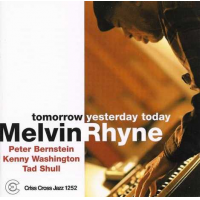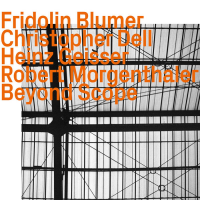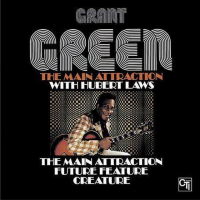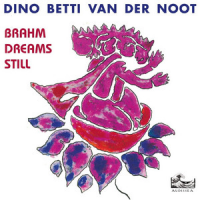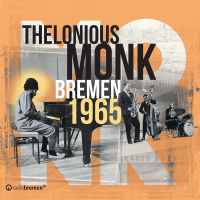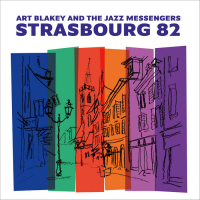Home » Jazz Articles » Liner Notes » Ryan Kisor: Awakening
Ryan Kisor: Awakening
After making an initial splash with two sets as a leader for Columbia back in the early '90s, Kisor really hit his stride with a recent series of albums for Criss Cross that began with 1998's Battle Cry (Criss 1145). Varying the line-ups and developing his own voice as a composer over the next subsequent releases, Awakening could be considered not only a throwback to his Criss Cross debut, but also a huge step forward in terms of the program which consists entirely of Kisor originals. "It was all new music and no one had seen any of it," explains Kisor as to his handiwork. "We just had a couple rehearsals and went in [the studio] and hit."
Once again Kisor has chosen to utilize the organ combo format, with both organist Sam Yahel and guitarist Peter Bernstein holdovers from Battle Cry. As for Yahel, who can be heard weekly at Smalls in New York City, a recent pairing with jazz icon Joshua Redman has meant a rise in popularity that can certainly be considered well deserved. A veteran of the New School Jazz program, Yahel lays claim to several recordings of his own including Trio (Criss 1158). "We've worked together quite a bit over the years and I have a real sense of freedom when I play with him because I think we have a good connection," Kisor says about Yahel's talents. "We've been playing together so long that he always hears where I'm trying to go and I can hear where he's trying to go so we can always take the music to new places."
As for Bernstein, the guitarist has solidly established himself as a first-call musician who has appeared on close to some 50 albums as a sideman with the likes of Lou Donaldson, Joshua Redman, and Melvin Rhyne, not to mention a solid handful of discs cut in the company of organist Larry Goldings and drummer Bill Stewart. He is well represented by his own appearances on Criss Cross, including the recent Heart's Content (Criss 1233). "I love playing with him," enthuses Kisor about the ubiquitous guitarist. "He has his own voice, which makes it always a pleasure to play with him."
New to the line-up is tenor saxophonist Grant Stewart, a Toronto native who has worked extensively in the States and abroad and like Yahel holds down a regular gig at Smalls where he's developed his own ensembles and has played with trumpeter Joe Magnarelli and bassist Omer Avital. Furthermore, Stewart has recorded two of his own sets for Criss Cross-Downtown Sounds (Criss 1085) and More Urban Tones (Criss 1124)-and has a new album in the works for the recently launched Smalls Records label. Having gigged with such elder statesmen as Cecil Payne and Curtis Fuller, Stewart plays with a robust tone and highly developed sense of swing that has more in common with swing style players than typical hard bop models such as Rollins and Coltrane. "We've played gigs in New York together, but this was the first time we've recorded together," Kisor articulates. "I really like the way he plays and I really wanted to take [full] advantage of the opportunity to get to record with him."
In addition to the vital role he's played as a member of Roy Hargrove's ensemble over the past few years, drummer Willie Jones III has logged in time with a recent edition of the Horace Silver Quintet and recorded twice previously with Kisor on Point of Arrival (Criss 1180) and The Dream (Criss 1215). "Willie's been my regular drummer for about five years now. He has a great swing feel and is very tasteful. Plus, he doesn't overplay and is very supportive."
In clarifying his modus operandi for composing this program of all originals, Kisor says, "I pretty much used the same approach with all these tunes. I come up with the melody first and I figure out the chords later. I usually hear the melody before anything else and so I can figure that out on the trumpet and then write the chords on the piano." As for the two parts that make up the piece "Awakening," the trumpeter adds, "I wrote the two tunes separately and then later decided they would go together well because they have similar thematic material." The opening section sports a pseudo bossa groove in 7/4 with Kisor and Yahel taking solos before the head returns and it sounds as though the piece has come to its conclusion. Jones then doubles the tempo in conventional 4/4 meter with statements from Stewart, Bernstein, and a second go round from Kisor in the offing. Take special note of Stewart's work here, which definitely hints at the influence of Hank Mobley.
Named for his hometown, "Sioux City" moves along at a medium gait with guitar and organ sharing the opening melody upfront, the horns then coming in to join the fold. Like with the majority of the pieces here, Kisor has given deliberate thought about how he's voiced the melody lines and the solo order as to enhance the total listening experience. As he sees it, "I thought it would be nice to have the guitar play the melody because usually when there's two horns the guitar and the organ don't get to play the melody. So I thought it would be nice to throw the melody around between the musicians just to change it up a little bit."
Sporting some wide intervals and a bop-inflected character, "UFO" gives Stewart, Kisor, and Bernstein a chorus each to speak their piece. About this perky number which gets its punch line from Stewart's closing 'Amen' cadence, Kisor merely says, "It's just a quirky little line I came up with when I was on the road."
"I live in Harlem and I have a good view of the moon from my apartment so that inspired me to write a pretty ballad." The results are to be heard in the sensitive treatment that Kisor gives "Harlem Moon." With perfect intonation and just the right touch of vibrato, the trumpeter states the main theme, with Stewart carrying the bridge. Kisor then launches into a delicate and well-paced solo followed by Bernstein's equally melodic spot.
It's Kisor and Stewart out front by themselves to usher in "Effing Blues," a brisk flag-waver with a coy title that suggests multiple meanings. With the exception of Bernstein, all hands get a chance to solo on this long form blues with the 12-bar structure repeated twice. Kisor claims this number is "fun to play, although it's a little tricky." He also adds, "I like the way it sounds with the tenor and Harmon mute." Possibly Kisor should consider more use of the muted horn in his work based on its pleasing inclusion here.
With a half time feel at the start, "What Can I Say?" has its melody first stated by trumpet, tenor, and guitar. As Stewart launches into his solo, the tempo kicks into a medium four beats to the bar. Kisor, Yahel, and Bernstein then follow with statements of their own. "I wrote that when I was in San Francisco and it's just a kind of laid back mellow sort of tune."
Kisor describes "Free As a Bird" as "something I was hearing with a different kind of vibe that was a bit more spacey. It's basically a blues, just with a really long form." This number definitely smolders with a latent fire just below the surface and a funky Blue Note groove that is also not unlike the kind of lengthy jams that are a specialty of organist Larry Goldings. Bernstein, Kisor, and Yahel each get some time in the spotlight before a reprise of the head.
"I wrote all these tunes pretty much at the same time and wanted to capture a lot of different moods and a lot of different feels," asserts Kisor in summing up his efforts here and it would be safe to say that he's more than accomplished what he set out to do. But don't look for much more in the way of analysis or explanation from the reserved trumpeter. As he advises, "Just let the music speak for itself."
Liner Notes copyright © 2026 C. Andrew Hovan.
Awakening can be purchased here.
Contact C. Andrew Hovan at All About Jazz.
An avid audiophile and music collector, Chris Hovan is a Cleveland-based writer / photographer / musician.
Track Listing
Awakening Part 1 & 2, Sioux City, UFO, Harlem Moon, Effing Blues, What Can I Say?, Free As A Bird.
Personnel
Ryan Kisor
trumpetGrant Stewart
saxophone, tenorPeter Bernstein
guitarSam Yahel
organ, Hammond B3Willie Jones III
drumsAlbum information
Title: Awakening | Year Released: 2003 | Record Label: Criss Cross
Tags
PREVIOUS / NEXT
Ryan Kisor Concerts
Support All About Jazz
 All About Jazz has been a pillar of jazz since 1995, championing it as an art form and, more importantly, supporting the musicians who make it. Our enduring commitment has made "AAJ" one of the most culturally important websites of its kind, read by hundreds of thousands of fans, musicians and industry figures every month.
All About Jazz has been a pillar of jazz since 1995, championing it as an art form and, more importantly, supporting the musicians who make it. Our enduring commitment has made "AAJ" one of the most culturally important websites of its kind, read by hundreds of thousands of fans, musicians and industry figures every month.















